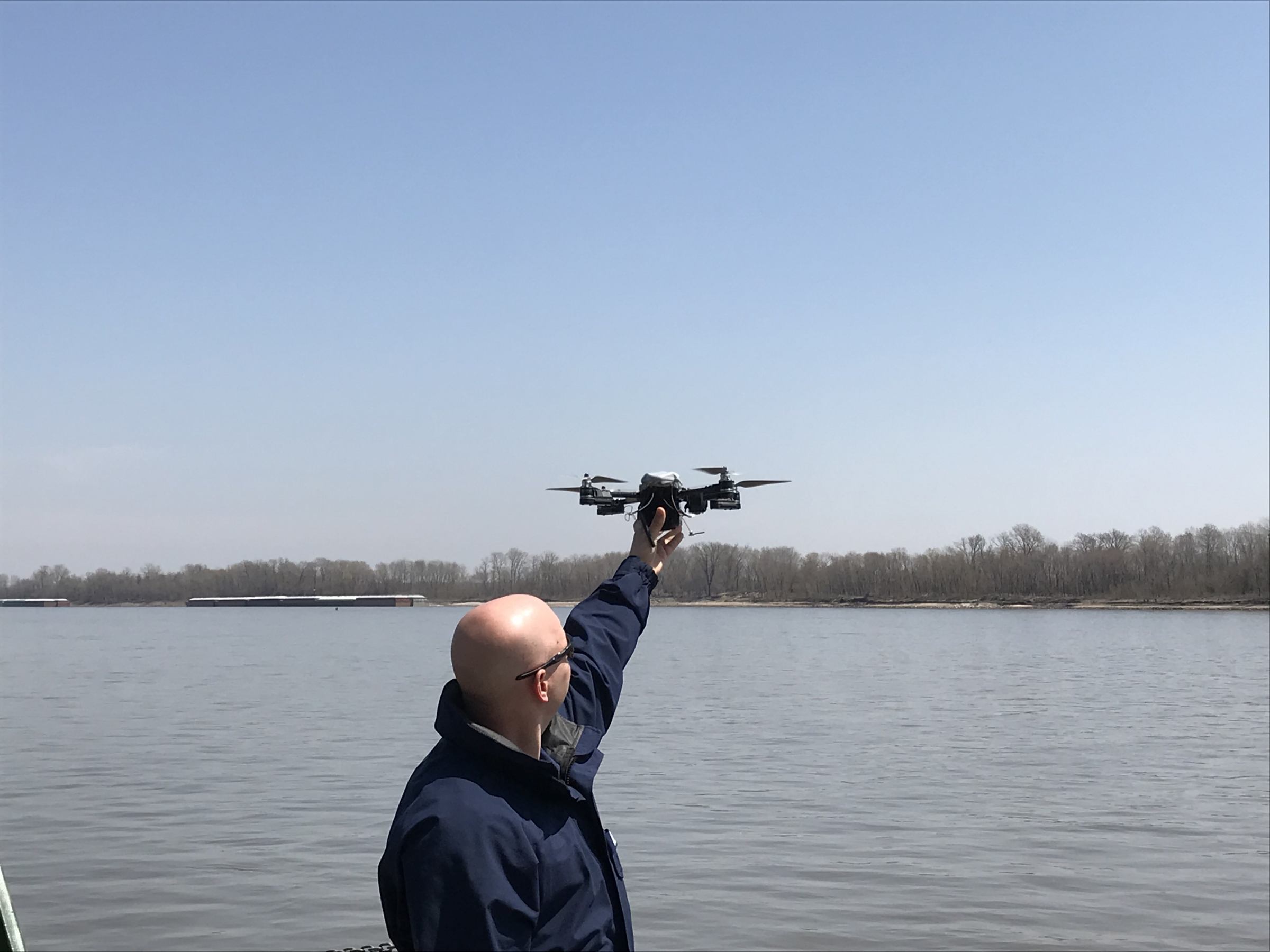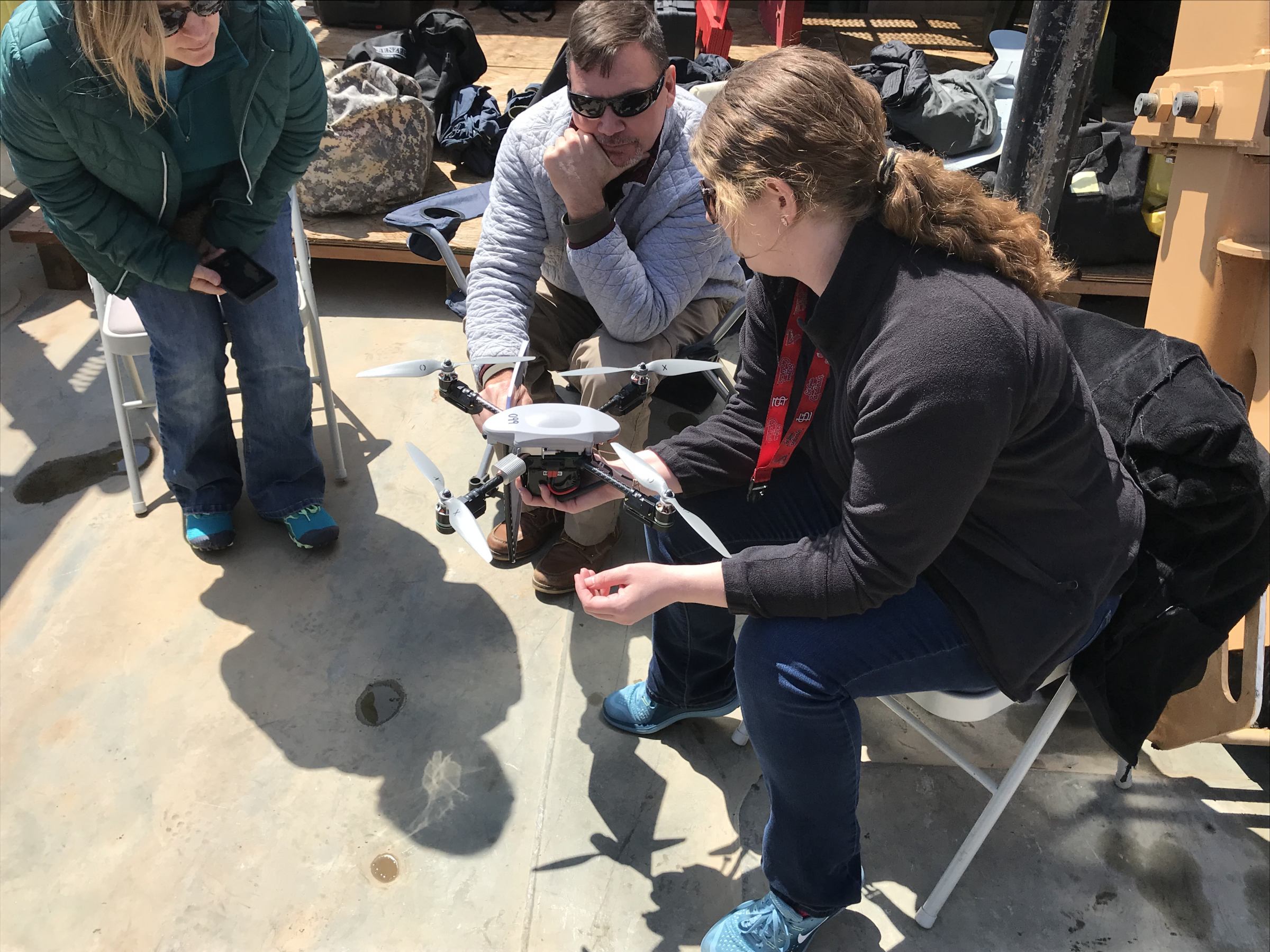
Attaching a camera to a Small Unmanned Aerial System (sUAS)—or drone—is not a new concept. Wedding videos, sporting events and feature films are captured using camera-mounted drones all the time. The Department of Homeland Security (DHS) Science and Technology Directorate (S&T) is looking to equip drones with different sensors useful in search-and-rescue, reconnaissance, active shooter response, hostage rescue situations, and a myriad of border security scenarios.
Throughout 2018, S&T will be selecting commercially available sensors and will demonstrate them at Camp Shelby, Mississippi. The demonstrations, part of S&T’s Robotic Aircraft Sensor Program (RASP), enhance DHS awareness of industry’s latest drone sensor combinations and capabilities. After S&T has established the requirements, vendors will each be given a week to demonstrate their tools, to representatives from U.S. Immigration and Customs Enforcement (ICE), U.S. Customs and Border Protection (CBP), and the U.S. Coast Guard (USCG), who provide feedback.
“The main goal of the program is to identify new technology that will improve Component operations,” said Tim Bennett, Project Manager of RASP, “Other goals are to give hands-on experience to Components, and to educate suppliers on the needs of ICE, CBP and USCG so they can incorporate them into their products.”
Over Land and Sea
The demonstrations will focus on land borders and maritime/coastal borders. There are unique differences to the capability requirements in each—for example, maritime drones must be waterproof. On land, some drones may need to be able to use a variety of computer-vision enhancements and navigational tools as well as specialized deployment methods (i.e.: truck-mounted, back-packable, tethered, etc.).

Drones are expected to function in both day and night settings, and demonstrate their ability to carry out necessary border and maritime surveillance tasks. Hypothetical scenarios range from border surveillance to tracking specific mobile conveyances, people, or other targets.
S&T is exploring a wide spectrum of capabilities, demonstrating drone systems for their ability to do things like provide a 3-D map of a specified region, classify targets and their potential threats, or even identify injured operators and the nature of their injuries.
“CBP, ICE, and USCG focus on operational requirements. When they need new technologies or tools, they turn to S&T. It is our job to understand their needs and find the tool or technology that meets them,” said Bennett.
Early in each week, agents from CBP, ICE and USCG will be taught to use the devices before assembling into “flight crews” to manage the payload. The drones will then be put through a variety of specific demonstrations—acoustic and ease of handling, for example. The middle of the week will consist of night-day demonstrations, where they will play out their scenarios involving multiple agents.
Sensing Great Potential
The future of drone sensors will involve many different types that can be switched out on a single drone to address a specific scenario. Monitoring a suspicious vehicle, for example, could require the speed and precision of a fixed-wing drone with a synthetic aperture radar, while reconnaissance/surveillance is more passive, possibly calling for a “quad” (a drone with four propellers) with a high resolution camera. Each scenario could require a different set of sensor tools. Other situational variables will determine what sensors are best for monitoring different activities.

Sensors of different kinds pay a major role in the Internet of Things, giving rise to new media and data applications. They are versatile, with forms already applied to phones, fitness wearables, and cars. Devices that identify heat, metal, and location are also considered sensors. Variations can be found at security checkpoints, on public roads, at the airport or a highly attended event. These sensors are mostly stationary.
With all the different converging technologies available today, sensors can take on a new mobility. Tools initially designed to stand alone are presented infinite potential through opportunities to integrate with others, forming more complex all-in-one systems. The need for all sensor components to speak a common language and pass data in a standardized way is another key requirement that will enable elevated situational awareness of users in the field and at command and control centers. More capable drones will boost interagency border security operations and enable land and sea operators to fulfill their common mission of protecting the homeland more safely and efficiently.
“We are also working with the National Aeronautics and Space Administration, Department of Justice, Department of Defense, and National Institute of Standards and Technology, on this and other UAS programs,” said Bennett.
Technology scouting projects such as these continue to bring agencies closer together and empower Component operations across the Homeland Security Enterprise.

